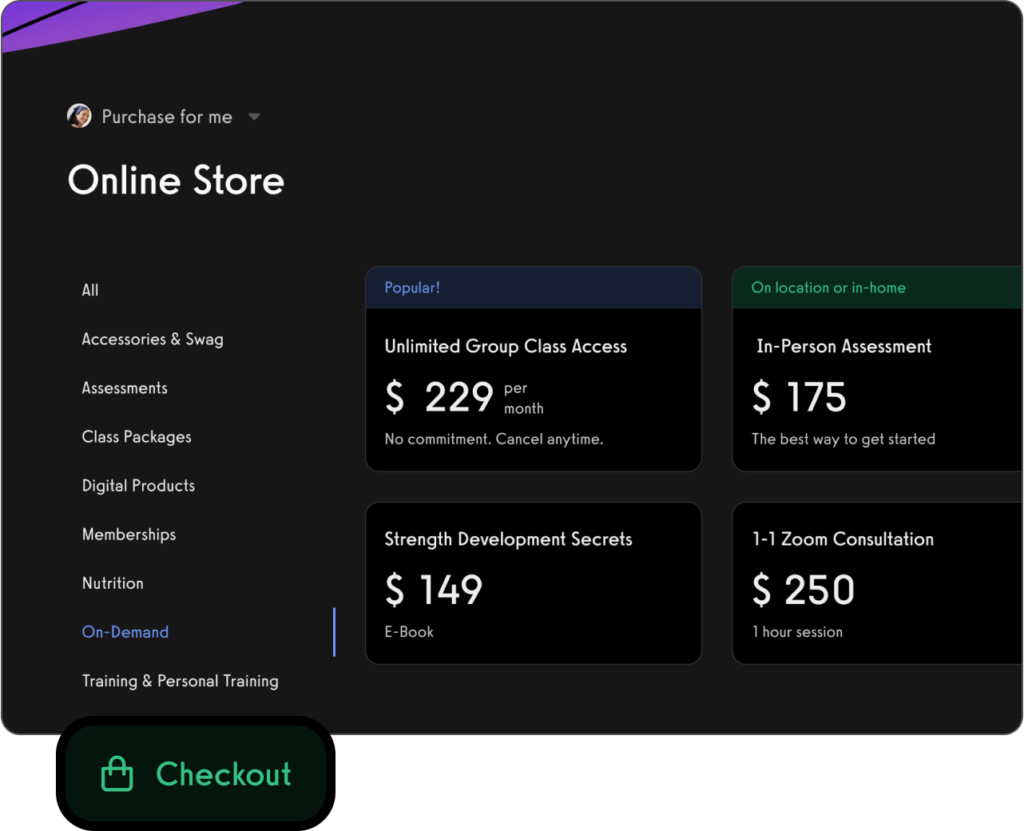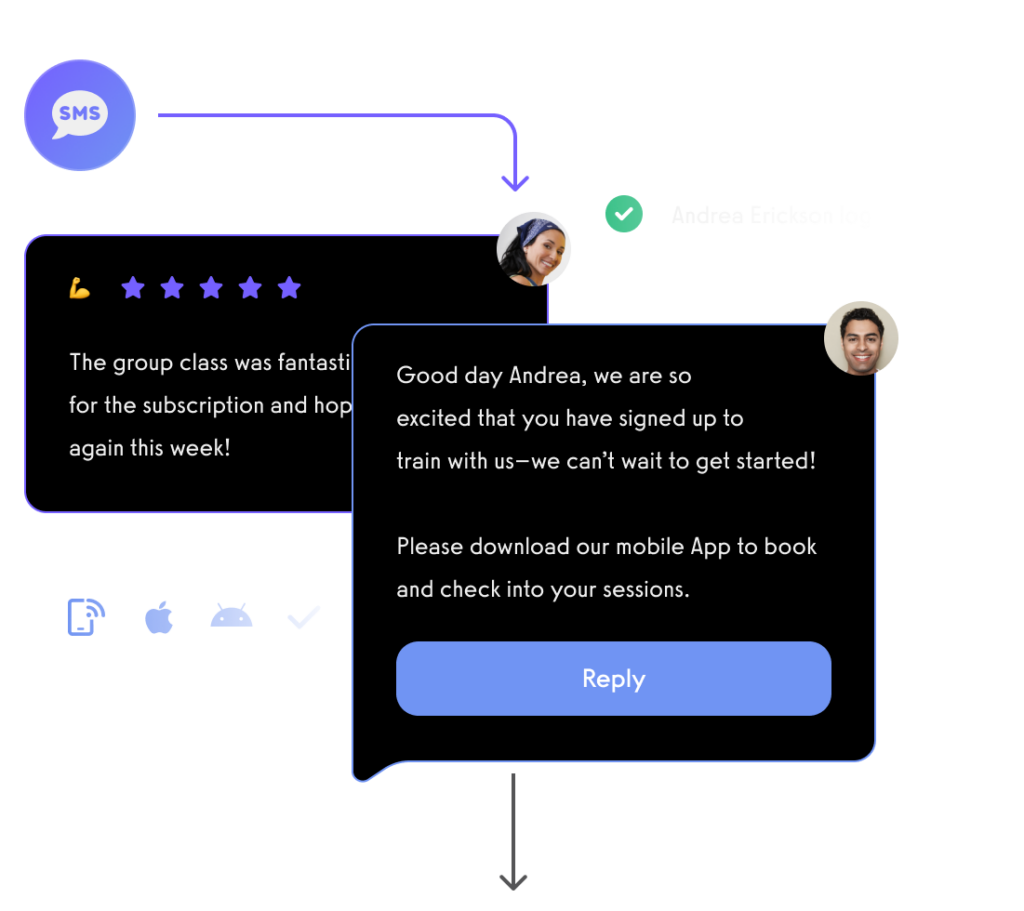Female Fitness Market: Size, Statistics, + More (2025)
The female fitness market has experienced remarkable growth in recent years, driven by evolving consumer preferences, technological advancements, and a greater emphasis on health, wellness, and body positivity.

The female fitness market is significant, with women constituting a major portion of gym memberships and group fitness class attendees. In the UK, for instance, women make up 54% of gym memberships and 76% of group fitness class participants, with popular activities including spinning, aerobics, and yoga.
Additionally, the women’s activewear market is experiencing growth, driven by an increase in health consciousness among consumers, a rise in sports and fitness enthusiasm, and a holistic approach toward athleisure wear. The women’s fitness market is characterized by clothing that offers unique advantages like quick-drying, thermal resistance, and breathability, catering to the active lifestyle of female consumers.
These female fitness trends highlight the expanding role and influence of women in the fitness industry, underscoring the importance of catering to their specific needs and preferences in fitness and activewear products.
Read on to learn more fitness trends for women, boutique fitness trends, and more. Then be sure to check out the best boutique fitness studio software from Exercise.com, all part of the best gym management software platform with the best personal training software built right in.

Female Fitness Market Size and Growth
- The global generated revenue for female sportswear is expected to reach $184.6 billion according to Allied Market Research.
- The global women’s activewear market was valued at $20.6 billion in 2022 and is projected to grow at a CAGR of 21.6% from 2023 to 2032, reaching an estimated value of $42 billion.
- In the United States, the share of women engaged in sports and exercise per day was 21.5% in 2021.
- The women’s performance sports apparel market worldwide was valued at approximately $42.24 billion in 2023.
Female Fitness Statistics
Here are 10 key statistics on the female fitness market:
- The global generated revenue for female sportswear is expected to reach $184.6 billion by 2020.[3]
- The global women’s activewear market was valued at $20.6 billion in 2022 and is projected to grow at a CAGR of 21.6% from 2023 to 2032, reaching an estimated value of $42 billion.[1][2]
- The women’s performance sports apparel market worldwide was valued at approximately $42.24 billion in 2023.[4]
- In the United States, the share of women engaged in sports and exercise per day was 21.5% in 2021.[3]
- 54% of gym memberships and 76% of group fitness class attendees in the UK are female.[1]
- The most popular group fitness classes among women are Spinning, Aerobics, and Yoga.[1]
- Only 41% of girls aged 12-14 feel happy they are doing enough exercise, and 36% are unhappy with their body.[1]
- 35% of girls aged 14-16 don’t participate in exercise due to lack of confidence, and 34% avoid it because they don’t like being watched.[1]
- Women who engaged in 2.5 hours of moderate physical activity or 75 minutes of vigorous exercise weekly were 24% less likely to die compared to inactive women.[3]
- Women were able to see the same 18% reduction in mortality risk with only 2.5 hours of moderate to vigorous exercise per week, compared to 5 hours needed for men.[3]
Read More:
- Gym Membership Statistics
- Fitness Influencer Statistics
- Fitness App Statistics
- Boutique Fitness Statistics
- Yoga Statistics
- CrossFit Statistics
Female Fitness App Statistics
The market for female fitness apps has seen significant growth over the past few years. This surge is driven by increasing awareness of health and fitness among women, advancements in mobile technology, and the convenience these apps offer. Below are some key statistics related to female fitness apps:
- Market Growth: The global market for fitness apps, including female-specific ones, is projected to grow at a CAGR of 21.1% from 2021 to 2028.
- User Demographics: Approximately 60% of fitness app users are women, with a significant portion being millennials and Gen Z.
- Popular Features: The most popular features among female users include workout plans, nutrition tracking, progress tracking, and community support.
- Usage Frequency: On average, female users engage with fitness apps 4-5 times per week.
- Revenue Generation: In-app purchases, subscriptions, and advertisements are the primary revenue streams for fitness apps. Female-focused apps have seen a 35% increase in revenue year-over-year.
Female Online Fitness Coach Market Statistics
The market for female online fitness coaches has also expanded, driven by the rise of remote work, digital transformation, and the demand for personalized fitness solutions. Here are some relevant statistics:
- Market Size: The online fitness coaching market is expected to reach USD 27.4 billion by 2026, with a significant portion of this attributed to female coaches.
- Demographics: Over 70% of online fitness coaches are women, catering primarily to female clients seeking tailored fitness programs.
- Client Retention: Female fitness coaches have an average client retention rate of 65%, higher than their male counterparts.
- Preferred Platforms: Social media platforms like Instagram and YouTube, along with specialized fitness platforms, are the primary channels for female fitness coaches to connect with clients.
- Growth Drivers: Factors such as the flexibility of online coaching, increasing demand for personalized fitness solutions, and the rise of virtual fitness events contribute to the growth of this market.
Key Female Fitness Trends Driving Growth
- Rise of Boutique Fitness Studios: The popularity of boutique fitness studios that cater to women’s preferences for specialized, community-focused experiences has been a significant driver of growth in the female fitness market.
- Focus on Body Positivity and Inclusivity: There is an increased focus on body positivity and inclusive fitness offerings for women of all shapes, sizes, and backgrounds, appealing to a wider demographic and promoting a more welcoming and empowering fitness culture.
- Leveraging Digital Technologies: Fitness brands are leveraging social media and digital technologies to build brand loyalty and engagement with female consumers, offering personalized, on-demand, and virtual fitness experiences.
- Emphasis on Health and Wellness: The growing emphasis on holistic health, wellness, and active lifestyles among women has fueled the demand for high-quality fitness products and services that cater to their specific needs and preferences.
Female Fitness Market Opportunities for Fitness Professionals
As the female fitness market continues to expand, there are numerous opportunities for fitness professionals to capitalize on these trends:
- Develop specialized, women-centric fitness offerings and experiences
- Prioritize inclusive, body-positive messaging and programming
- Leverage digital platforms and technologies to enhance the client experience
- Foster a strong sense of community and belonging among female clients
- Stay attuned to evolving consumer preferences and adapt your services accordingly
By understanding and addressing the unique needs and preferences of the female fitness market, fitness professionals can position themselves for long-term success and growth in this rapidly expanding industry.
Maximize your gym or fitness business’ average order value with a best-in-class payments stack.

Sell fitness products and services in-person and online.

Book appointments to keep your gym calendar full of profitable clients.

Engage your gym leads and gym members with email, SMS, and in-app notifications to get more sales and increase gym membership retention with all of those January new gym memberships.

All from your own custom branded fitness app.


What are some popular female fitness market niches?
Popular female fitness market niches encompass a wide range of specialized areas catering specifically to women’s health and fitness needs. These include prenatal and postnatal fitness, tailored to support women before and after childbirth; women-specific yoga and Pilates, focusing on flexibility, strength, and mental well-being; strength training programs designed with women’s physiology in mind; and wellness-oriented fitness that integrates mental health with physical exercise. Other emerging niches are women’s weight loss and body transformation programs, boutique fitness classes like barre and spin that appeal predominantly to female clientele, and digital platforms like apps and online communities dedicated to fostering female empowerment through fitness.
How big is the business of women’s fitness?
The business of women’s fitness constitutes a significant portion of the global fitness industry, with a growing emphasis on services and products tailored to female consumers. This segment includes gym memberships, fitness apparel and equipment, wellness and nutrition programs, and digital fitness solutions. The rise in awareness around women’s health issues and the increasing participation of women in fitness activities have contributed to the expansion of this market. While specific financial figures can vary, the overall trend indicates a robust and expanding market, with opportunities for continued growth as more women seek fitness solutions that cater to their specific needs.
What are the demographics of the fitness industry?
The demographics of the fitness industry are diverse, encompassing a wide range of ages, genders, and backgrounds. However, there’s a notable trend towards younger generations, including Millennials and Gen Z, who prioritize health and wellness. The industry also sees a balanced gender split, with a slight variation in preferred activities and fitness goals between men and women. Additionally, urban areas and regions with higher socioeconomic status tend to have higher participation rates in fitness activities, reflecting the influence of accessibility and disposable income on fitness engagement.
What is the largest fitness market?
The United States is often considered the largest fitness market globally, characterized by high gym membership rates, a vast number of fitness facilities, and significant consumer spending on fitness-related products and services. The U.S. market is a leader in fitness trends and innovations, from the latest workout crazes to cutting-edge fitness technology. However, other regions, such as Europe and parts of Asia, are also significant players in the global fitness landscape, each contributing to the industry’s growth with unique trends and market dynamics.
Read More: Fitness Market Trends
What is the most profitable fitness niche?
The most profitable fitness niche can vary based on current trends and consumer demand, but personal training and specialized fitness programs (such as CrossFit, boutique spin classes, and yoga studios) often rank high in profitability. These niches offer personalized experiences and cater to specific consumer needs, allowing for premium pricing. Additionally, online fitness platforms and apps have emerged as highly profitable, capitalizing on the convenience and accessibility of digital solutions for fitness.
Read More:
Who are the most popular female fitness influencers?
Popular female fitness influencers include names like Kayla Itsines, known for her Bikini Body Guides (BBG) and Sweat app; Cassey Ho, the founder of Blogilates; and Jeanette Jenkins, a celebrity trainer with a significant online following. These influencers leverage social media platforms to inspire and engage with millions of followers worldwide, offering workout tips, nutritional advice, and motivational content.
Read More: Most Popular Female Fitness Influencers
What are the most successful female fitness entrepreneurs?
Successful female fitness entrepreneurs include Kayla Itsines, co-founder of the Sweat app; Katrina Scott and Karena Dawn, the duo behind Tone It Up; and Robin Arzon, Vice President of Fitness Programming and Head Instructor at Peloton. These women have built fitness empires by combining innovative workout programs with strong brand identities and community-building strategies.
Read More: Most Successful Female Fitness Entrepreneurs
How can I make a women’s fitness app?
Creating a women’s fitness app involves identifying your unique value proposition that addresses specific needs within the female fitness market, such as personalized workout plans, nutritional guidance, or community support features. Focus on user-friendly design and engaging content to encourage regular use. Collaborating with fitness professionals and leveraging technology like AI for personalized experiences can enhance your app’s appeal. Testing and gathering user feedback are crucial for refining the app to meet your target audience’s needs effectively.
Read More: How to Make a Fitness App
Are women’s only gyms profitable?
Yes, women’s only gyms can be very profitable. They cater to a specific market segment that values a comfortable and supportive environment. This niche appeal allows for targeted marketing and member retention strategies. Many all women gyms also offer specialized classes, female gym equipment, and services that attract and retain members. Exercise.com provides the tools to manage memberships, schedule classes, and track member progress, making it easier to run a profitable women’s only gym.
Can you open a women’s only gym?
Yes, you can open a women’s only gym. The process involves finding a suitable location, obtaining the necessary licenses and permits, and investing in female gym equipment. Marketing to your target audience is crucial, and offering specialized programs and classes can help attract members. Exercise.com can support your business by providing a comprehensive platform for managing memberships, scheduling, and client engagement, ensuring your female fitness studio runs smoothly.
How many women only gyms are there?
The exact number of women’s only gyms varies by region, but there has been a growing trend in opening these specialized fitness centers. In the United States alone, there are hundreds of womens only gyms catering to the unique needs of female clients. These gyms focus on creating a supportive and empowering environment, often featuring female workout influencers and specialized female gym equipment. Exercise.com helps manage these facilities efficiently with tools for scheduling, client management, and business growth.
How to become a female fitness trainer?
To become a female fitness trainer, you need to obtain a certification from a recognized organization, such as ACE, NASM, or ISSA. Next, gain practical experience by working in a gym or female fitness studio. Networking with other trainers and staying updated on fitness trends, including those promoted by female workout influencers, is also important. Exercise.com offers resources and tools to help manage your training business, track client progress, and grow your professional network, making it easier to succeed as a female fitness trainer.
Read More: How to Become a Personal Trainer
What percentage of women go to the gym?
Approximately 50-60% of women report going to the gym regularly. This percentage reflects the growing interest in fitness and wellness among women. Many choose all women gyms or female only gyms for a more comfortable and supportive environment. These gyms often feature specialized classes, female gym equipment, and a community atmosphere that encourages regular attendance. Exercise.com provides the management tools needed to cater to this demographic, enhancing member engagement and retention.
How can I run a successful women’s fitness business?
Running a successful women’s fitness business requires understanding your target market’s unique needs and preferences. Offering specialized programs, creating a supportive community atmosphere, and maintaining high-quality customer service are key. Emphasizing personalization and results-driven approaches can set your business apart. Additionally, leveraging digital marketing and social media can help build your brand and attract clients. Continuously gathering client feedback and staying abreast of industry trends are essential for sustained success and growth.
Read More: Women’s Fitness Business Ideas

Sources
- Statista
- Market Research Future
- App Annie
- International Journal of Sports Science
- Business Insider
- https://strengthambassadors.com/blog/the-must-know-womens-fitness-statistics-for-2022
- https://www.globenewswire.com/en/news-release/2023/12/07/2792367/0/en/Women-s-Activewear-Market-Projected-to-Gain-145-6-Billion-By-2032-Growing-at-a-21-6-CAGR-The-Brainy-Insights.html
- https://www.cnbc.com/2024/02/24/study-women-get-greater-exercise-benefits-than-men-with-less-effort.html
- https://pvolvefranchise.com/blog/fitness-insights/fitness-industry-growth/
- https://www.nih.gov/news-events/news-releases/women-may-realize-health-benefits-regular-exercise-more-men










